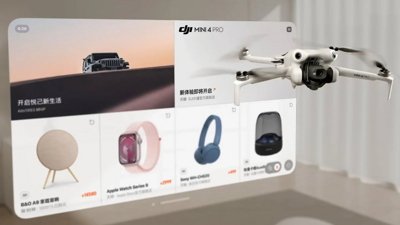Consumer Reports claims Apple's Verizon iPhone 4 suffers same antenna issue
On the company's electronics blog on Friday, Consumer Reports said it discovered a manner in which the new iPhone 4 can be held that will cause it to drop calls in weak signal conditions. The attenuation issue was reportedly discovered by the company's engineers in lab tests.
"The problem is similar to the one we confirmed in July with the AT&T version of Apple's newest smart phone," the post reads. "It can occur when you hold either version of the phone in a specific but quite natural way in which a gap in the phone's external casing is covered.
"The phone performs superbly in most other respects, and using the iPHone 4 with a case can alleviate the problem>"
The consumer advocacy group noted that there have not been widespread reports of signal issues with the new iPhone with a CDMA radio, likely because Verizon has superior network coverage when compared to AT&T.
But Consumer Reports also opted not to include the Verizon iPhone 4 in its list of recommended smartphones, despite granting the handset high marks in terms of its performance and functionality. That's the same approach the company took last July, when it declared the GSM iPhone 4 on AT&T's network the best smartphone available, but did not include it on its list of recommended handsets solely because of the antenna issue.
In comparing the iPhone 4 to other smartphones on Verizon's network, the organization found that only Apple's phone experienced attenuation issues. The iPhone 4 was compared to the Samsung Fascinate, Motorola Droid 2 Global, HTC Droid Incredible, LG Ally, and Motorola Droid X.
As with the AT&T iPhone 4, Consumer Reports found that covering the thin gap on the bottom left corner of the device with one's hand would cause signal degradation. It found that signal dropped "notably" within 15 seconds of the gap being bridged, and that the handset dropped calls when the corner was touched at low signal strength.
The CDMA iPhone 4 features a redesigned antenna, which Apple has said was done to make the device compatible with networks like Verizon's, and was not done to address the antenna controversy that stirred up after the GSM model launched last summer.
Consumer Reports' decision not to recommend the iPhone 4 last year fueled that controversy and led, in part, to Apple running a limited program where it gave away free cases to iPhone 4 buyers. The case program formally concluded last September, but Apple still offers a free case to customers who experience signal issues and call to request one.
Apple also fired back with a public relations campaign that included giving members of the media a tour of its antenna performance chambers, and a special website devoted to demonstrating signal attenuation issues experienced when holding a number of devices, including the iPhone.
Even with all of the controversy, Apple's iPhone 4 was still the hottest selling handset of 2010. Over the holiday buying season, Apple sold a record 16.2 million iPhones in three months alone.
 Slash Lane
Slash Lane










 Amber Neely
Amber Neely
 William Gallagher
William Gallagher

 Malcolm Owen
Malcolm Owen











